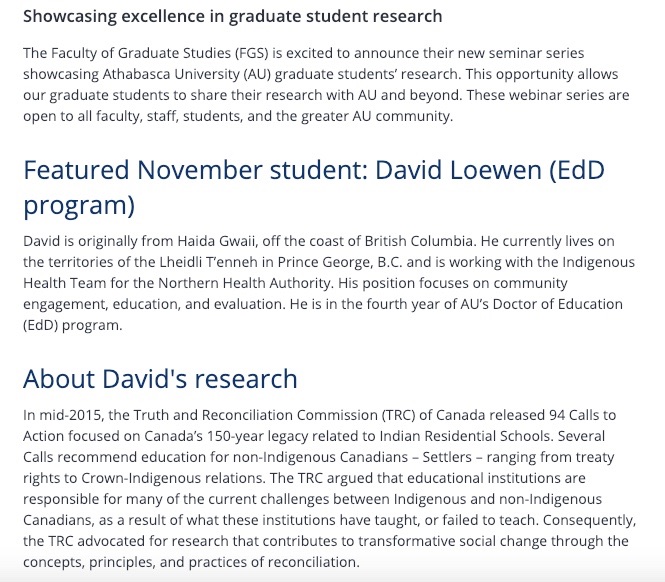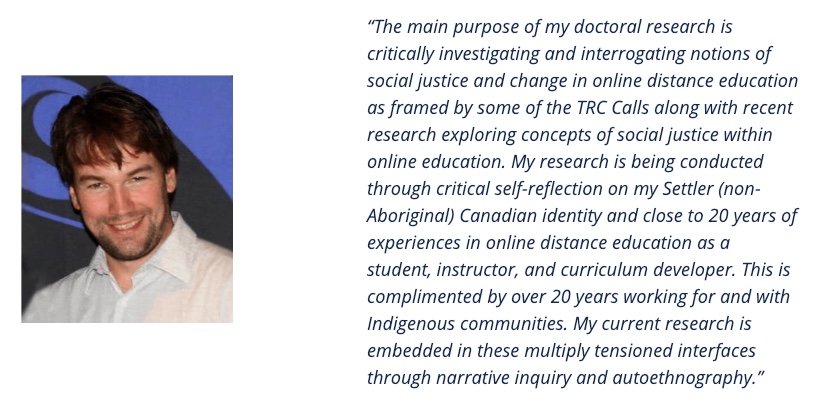- What is the most important characteristic of high quality online learning environments and why it is important?
I’m not sure how to answer this question as it is not entirely clear what is meant by “learning environment”; for example, visiting an online news service could be described as a ‘learning environment’. Visiting a blog could be considered the same. Watching a recording of a hockey game, could also be considered a learning environment – especially if one is a hockey player or coach. “Video” is used for coaching and learning on a regular basis.
I read a somewhat disturbing stat recently which suggested that a majority of teenage boys/men in N. America are ‘learning’ about sex from free pornography sites. It could be argued that this is also a ‘learning environment’ – as are propaganda websites, religious extremism, and the various battles over “fake news”.
Therefore, in the danger of sounding somewhat provocative, the most important characteristics of any online learning environment is that it is accessible – somehow. Thus, my current conclusion to this question suggests that the most important characteristic of a high quality learning environment is that it must, in fact, be “online”. Or, maybe just as importantly, one would need a device to access an ‘online’ learning environment.
- What is one thing that you have learned about teaching online (or face-to-face if you haven’t taught online) in the last year and how has it impacted your practice?
I have been both an instructor and a student in online environments over this past year. I have also taught face-to-face. One of the courses I have taught face-to-face focussed on Interpersonal Communication and Conflict Resolution. The vast majority of students in this course were International students. In one class I had 15 Punjabi-speaking students, 5 from various other parts of India, 5 students from the Philippines, 2 from Mexico, 1 from South Korea, 1 from Croatia, and 1 from Rwanda.
For many of these students it was their first semester in Canada. At the beginning of the course, some of these students had only been in Canada for a few days – still suffering from jet lag. I am highly skeptical that this course could be taught as successfully in a purely online environment. Yet, there are theories in the online learning world that there is ‘no significant difference’ between online and face-to-face. I tend to disagree.
Part of my disagreement hinges on some aspects of ‘education’ or ‘learning’ that might be labelled intangibles. Those components that may not be captured in learning objectives and measurable outcomes, and the big data ‘revolution’. I have watched some impressive bonds develop between students from vastly different countries and first languages, as they navigate and struggle through strengthening English skills and a foreign countries’ values, norms and education systems. In turn, I have also frequently found myself a ‘learner’ as I navigate working with learners from other countries. Thus, the impact on my practice is one of approaching an instructor role as someone also open to learning – thus the ‘environment’ for learning can become a reciprocal one for all involved.
- What questions do you have about online teaching and learning?
I have many questions about online teaching and learning. I am also currently a doctoral student at Athabasca University nearing completion of a doctorate degree specializing in online education and innovation. The field is ripe with theories (e.g. COI) and links to the older practice of ‘distance education’ (e.g. through the mail, or otherwise). However, sometimes the theorizing might get in the way of the reality for many learners (and instructors plus institutions) – especially those learners that may be marginalized by a variety of factors. Yet, on the flip side, there are also countless opportunities.
Many of my questions lie along that spectrum or continuum.


